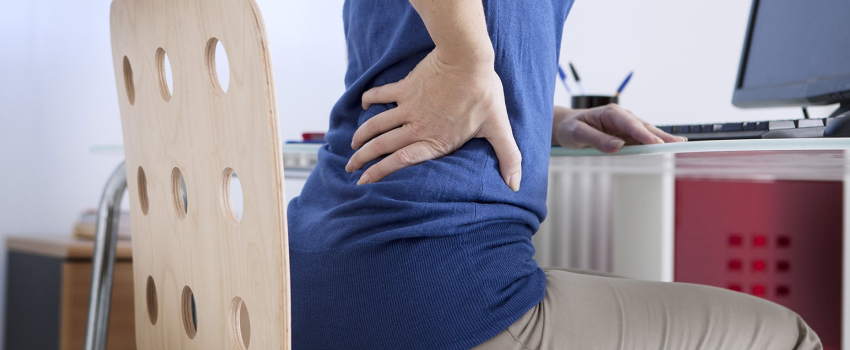- Low Back Pain
- Sciatica (Lumbar Radiculopathy)
- Neck Pain
- Cervical Radiculopathy
- Lumbar Disc prolapse (Disc Herniation)
- Spinal Canal Stenosis
- Spondylolisthesis
- Osteoporotic spine fractures
- Fractures of Spine

Spine Common Disorder Treatment
1) Low Back Pain

Low back pain is very common problem. Your back is formed by bones, muscles, nerves, and ligaments that work together to help you stand and bend. The bones of the back are called vertebrae, which together form the spinal column. Between each stacked pair of vertebrae in the spinal column is a disc acting like cushions or shock absorbers.
Nonspecific back pain —the pain is not clearly caused by a specific disease, abnormality, or serious injury of the spine. This type of pain most often represents a strain in one or more of the muscles in the lower back, and it can be severe.
Serious potential causes — Rarely, back pain is caused by a potentially serious spinal condition, such as an infection, tumour, or "cauda equina syndrome," which causes leg weakness and bowel or bladder dysfunction as well as back pain.
Other potential causes include vertebral (spinal) compression fractures, in which one or more vertebrae become fractured as a result of weakening and thinning of the bones due to osteoporosis.
Degenerative disc disease — Over time, normal wear and tear can lead to degenerative disc "disease" (breakdown of the spinal discs), with the development of small cracks and tears and/or loss of fluid in the discs.
Bulging and herniated discs — Too much wear and tear on spinal discs can lead to the bulging of a disc, in which the outer covering is weakened and the disc protrudes. Some people may develop sciatica (pain that extends down the back of the leg) if the bulging disc presses on a nerve.
Osteoarthritis — Osteoarthritis can affect the joints that connect the vertebrae to one another, called the facet joints. This condition, known as facet joint arthropathy, can lead to bone spurs around the joint and may cause low back pain.
Spondylolisthesis — Spondylolisthesis is a condition in which one of the vertebrae of the lower spine "slips" forward in relation to another. Spondylolisthesis is usually caused by stress on the joints of the lower back and may be associated with facet joint arthropathy
Treatment
- Unless the low back pain is caused by a serious medical condition (which is uncommon), it typically resolves fairly quickly.
- Most of the patients can be managed with a short period of relative rest, Activity modifications, physical modalities, Analgesics, muscle relaxants and physiotherapy exercises.
- Surgery - Only a small minority of people with low back pain will require surgery.
2) Sciatica (Lumbar Radiculopathy)

Sciatic nerve starts in the lower back and runs down the back of each leg. The nerve controls the muscles in the lower leg and provides sensation to the back of the thigh, lower leg and the sole of your foot. Sciatica is the term given to the pain, numbness or tingling sensation radiating along the course of the nerve. Severe cases of sciatica present with muscle weakness. Common causes for sciatica include irritation of the sciatic nerve roots due to herniated disc in lumbar region, bony overgrowth or stenosis from degenerative disorders in lumbar spine, compression of the nerve under piriformis muscle in the buttocks.
Examination by your doctor may help to find out the reason for the irritated nerve root. X-rays and other specialized imaging tools, such as a magnetic resonance imaging (MRI) scan can confirm your doctor's diagnosis.
Treatment
- The condition usually gets controlled with relative rest, medications and physical therapy.
- You might need surgery if you have leg pain persisting for 3 months or more of nonsurgical treatment.
3) Neck Pain
The neck or cervical spine is formed by seven cervical vertebrae bone C1 to C7. In between adjacent vertebra are discs, which act as shock absorbers. There are supporting ligaments and muscles
Neck pain can be classified as "acute" (lasting less than six weeks) or "chronic" (lasting more than 12 weeks). While most episodes of acute pain resolve quickly, some people do go on to have chronic pain.
Causes of Neck pain
- Cervical strain —can occur when there is an injury to the muscles of the neck, causing tightness of the cervical and upper back muscles.
- Cervical spondylosis — a condition caused by abnormal wear and tear (called degenerative changes) of the cervical spine.
- Cervical facet osteoarthritis — The facet joints are located on sides of the vertebrae, and arthritis in this area can cause pain in the side of the neck.
- Whiplash injury — "Whiplash" is a term used to describe injury caused by a traumatic event that causes an abrupt forward/backward movement of the neck. Whiplash can affect many of the structures in the neck, including the muscles, ligaments, and joints.
- Most people with neck pain will not need an imaging test. In some cases, an imaging test such as an X-ray, computed tomography [CT] scan, or magnetic resonance imaging [MRI]) will be recommended.
In most cases, neck pain can be treated conservatively with medications, ice or heat, and stretching exercises and postural corrections. Surgery may be recommended for those with symptoms related to nerve or spinal cord compression (cervical spondylotic myelopathy or cervical radiculopathy).
Surgery may be recommended for those with symptoms related to nerve or spinal cord compression (cervical spondylotic myelopathy or cervical radiculopathy).
4) Cervical Radiculopathy
Cervical radiculopathy means that a nerve in the neck (a cervical nerve) is pinched. This can happen because of an injury to the cervical spine (vertebrae) in the neck, or due to age related degeneration of the cervical disc. This condition can cause pain or loss of feeling (numbness) that runs from your neck all the way down to your arm and fingers.
Treatment
- With rest, the condition often gets better over time.
- Wearing a soft neck collar (cervical collar) for short periods of time.
- Doing exercises (physical therapy) to strengthen your neck muscles.
- Taking medicines.
Surgery: This may be needed if other treatments do not help. The type of surgery that is used will depend on the cause of your condition.
5) Lumbar Disc prolapse (Disc Herniation)

The lumbar spine is made up of the lower five vertebrae. Doctors often refer to these vertebrae as L1 to L5. Intervertebral discs separate the vertebrae. A disc is made of two parts. The center, called the nucleus, is spongy. It provides most of the disc's ability to absorb shock. The nucleus is held in place by the annulus, a series of strong ligament rings surrounding it.
Healthy discs work like shock absorbers to cushion the spine. They protect the spine against the daily pull of gravity. They also protect it during strenuous activities that put strong force on the spine, such as jumping, running, and lifting.
Causes
Herniation occurs when the nucleus in the center of the disc pushes out of its normal space. The nucleus presses against the annulus, causing the disc to bulge outward. Sometimes the nucleus herniates completely through the annulus and squeezes out of the disc.
6) Spinal Canal Stenosis

Spinal stenosis describes a clinical syndrome of buttock or leg pain. These symptoms may occur with or without back pain. It is a condition in which the nerves in the spinal canal are compressed. The spinal canal is the hollow tube formed by the bones of the spinal column. Anything that causes this bony tube to shrink can squeeze the nerves inside.
There are many reasons why symptoms of spinal stenosis develop. Some of the more common reasons include congenital stenosis (being born with a small spinal canal), spinal degeneration, spinal instability, disc herniation.
- Diagnosis begins with a complete history and physical examination.
- The best way to see the effects and extent of lumbar spinal stenosis is with a magnetic resonance imaging (MRI) scan.
Non-operative Treatment
Unless your condition is causing significant problems or is rapidly getting worse, most doctors will begin with nonsurgical treatments. Up to one-half of all patients with mild-to-moderate lumbar spinal stenosis can manage their symptoms with conservative (nonsurgical) care. Neurologic decline and paralysis in this group is rare.
Surgery
The main surgical procedure used to treat spinal stenosis is lumbar laminectomy. Some patients also require fusion surgery along with the laminectomy procedure if spinal instability is present.
7) Spondylolisthesis

Normally, the bones of the spine (the vertebrae) stand neatly stacked on top of one another. Ligaments and joints support the spine. Spondylolisthesis alters the alignment of the spine. In this condition, one of the spine bones slips forward over the one below it. As the bone slips forward, the nearby tissues and nerves may become irritated and painful.
An ache in the low back and buttock areas is the most common complaint in patients with spondylolisthesis. Pain is usually worse when standing, walking, or bending backward and may be eased by resting or bending the spine forward. Nerve compression can cause symptoms where the nerve travels and may include numbness, tingling, slowed reflexes, and muscle weakness in the legs.
Doctors will usually order X-rays of the low back. The X-rays are taken with your spine in various positions. They can be used to see which vertebra is slipping and how far it has slipped.
Non-Operative Treatment
Most patients with symptoms from degenerative spondylolisthesis do not need surgery and respond well to nonoperative care. Medications may be prescribed to help ease pain and muscle spasm.
If your doctor diagnoses an acute pars fracture that has the potential to heal, it may be recommended that you wear a rigid back brace for two to three months. This usually occurs in children and teenagers who begin having back pain and see their doctor early on.
Surgery
Surgery is used when the slip is severe and when symptoms are not relieved with nonsurgical treatments.
8) Osteoporotic spine fractures

Osteoporotic spine fractures are a common and serious condition where weakened bones in the spine break, often due to osteoporosis. These fractures can cause severe back pain, reduced mobility, and a decrease in quality of life. Typically occurring in older adults, especially postmenopausal women, these fractures may happen from minor falls or even simple actions like bending. Treatment options include medications to strengthen bones, pain management, physical therapy, and in severe cases, procedures like vertebroplasty or kyphoplasty. Early diagnosis and treatment are crucial to managing pain and preventing further fractures.
9) Spine Fractures
Spinal fractures anywhere along the spine mostly result from serious injuries like high-energy trauma. Other fractures can be the result of a lower-impact event, such as a minor fall, in an older person whose bones are weakened by osteoporosis.
Spinal fracture symptoms may include: Pain in the back or neck, Tingling or numbness in limbs, Weakness or paralysis of limbs, Uncontrolled muscle contractions, Loss of urinary or bowel control
Spinal fractures require an evaluation on emergency basis. It is diagnosed using:
- X-rays to check for fractures or dislocations of the spine
- Spine CT scan to get detailed view of the broken spinal bone.
- MRI scan to determine soft tissue damage to the ligaments and discs, and assess spinal cord injury.
When a spinal fracture is suspected, the first step is to stabilize the individual. This may be done through the use of a backboard, stretcher or cervical collar to prevent the person from moving and sustaining further injuries.
Minor fractures of the spine can be managed with rest and medication. Whereas more severe fractures might require surgery to realign the bones. If left untreated, spinal fractures can lead to permanent spinal cord injury, nerve damage and paralysis.

Years Of - Experience 25 -
Dr. Manuj Wadhwa
Chairman & Executive Director Elite Institutes of Orthopedics & Joint Replacement- Ivy Hospitals, Punjab
- Ojas Hospitals, Panchkula
Awards Wining Doctor
- 2 Times World Book of Records
- 7 Times Limca Book of Records
Let’s Get In Touch

Sector 71, Mohali
09:00 am - 04:00 pm
(By Prior Appointments)

Sector 22, Panchkula
09:00 am - 04:00 pm
(By Prior Appointments)
Email us
Give us a Call
Book An Appointment








